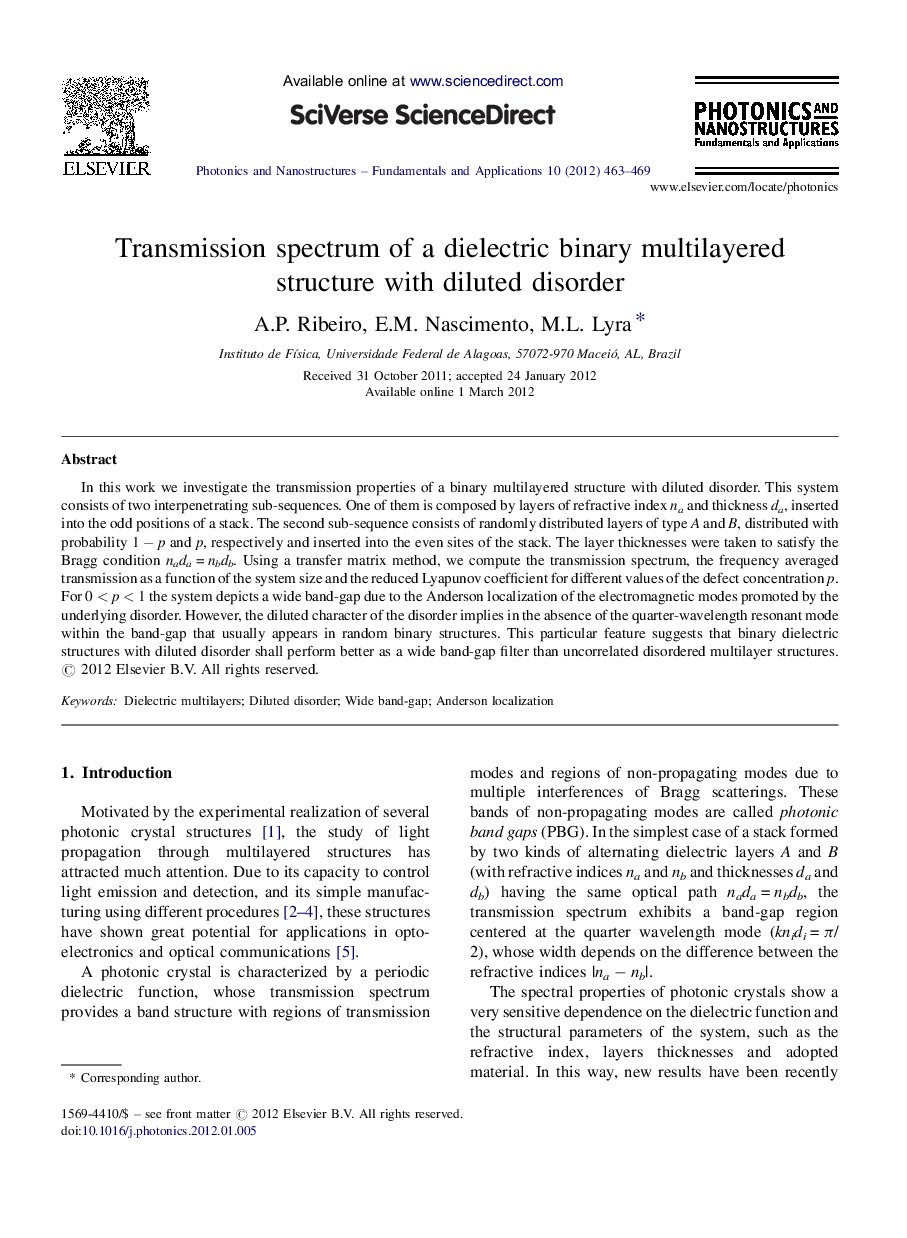| Article ID | Journal | Published Year | Pages | File Type |
|---|---|---|---|---|
| 1543345 | Photonics and Nanostructures - Fundamentals and Applications | 2012 | 7 Pages |
In this work we investigate the transmission properties of a binary multilayered structure with diluted disorder. This system consists of two interpenetrating sub-sequences. One of them is composed by layers of refractive index na and thickness da, inserted into the odd positions of a stack. The second sub-sequence consists of randomly distributed layers of type A and B, distributed with probability 1 − p and p, respectively and inserted into the even sites of the stack. The layer thicknesses were taken to satisfy the Bragg condition nada = nbdb. Using a transfer matrix method, we compute the transmission spectrum, the frequency averaged transmission as a function of the system size and the reduced Lyapunov coefficient for different values of the defect concentration p. For 0 < p < 1 the system depicts a wide band-gap due to the Anderson localization of the electromagnetic modes promoted by the underlying disorder. However, the diluted character of the disorder implies in the absence of the quarter-wavelength resonant mode within the band-gap that usually appears in random binary structures. This particular feature suggests that binary dielectric structures with diluted disorder shall perform better as a wide band-gap filter than uncorrelated disordered multilayer structures.
► A multilayered dielectric structure with binary diluted disorder is introduced. ► The structure is composed of interpenetrating uniform and random sequences. ► The transmission spectrum exhibits a wide band-gap with no relevant resonant mode. ► Such structure has ideal properties for wide band filtering applications.
